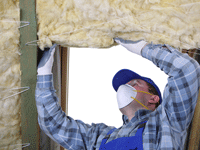 Reducing Your Home’s Need to Keep Cool Means Doing Some Simple Improvements
Reducing Your Home’s Need to Keep Cool Means Doing Some Simple Improvements
When you work toward a low cooling load, your electric bill will go down. The term cooling load refers to the variables in your home that contribute to the heat that your air conditioner has to remove to keep you comfortable. The most common factors that contribute to heat gain indoors include inadequate attic insulation levels, window efficiency and air leaks.
The following tips can help you reduce the heat gain indoors, giving you more comfort and lower electric bills.
Insulation
The Department of Energy recommends that you have at least 16 inches of insulation in the attic for our climate. Fiberglass batt or blown-in insulation can be fairly easy to install, and it’s durable and inexpensive. Adding more gives instant protection from heat transfer coming from the attic into your home. If you don’t think you’re up to the installation, your local HVAC contractor can do it for you.
Windows
Like attics, windows can let a lot of heat come into your home. If you don’t have dual pane or thermal windows, the best way to cut your cooling load from windows is to shade them from the outside. Shade cloth in the form of shade screens can block up to 90 percent of the heat from the sun. If shade screens won’t work, putting reflective window film on the inside of your windows will cut down on heat gain without blocking your view. Heavy drapes also reduce the amount of heat circulating inside your rooms from windows that receive sunshine.
Air Leaks
Looking around your home for air leaks and filling them can cut your cooling bills. Although leaks may be individually small, collectively they can bring in as much outdoor air as opening a door or window. The best places to look for leaks are around your window frames, exterior door frames and places where wires, cables and pipes enter your home. Caulk, weatherstripping and expanding foam can effectively seal the leaks.
If you’d like to learn more about lowering your cooling load, contact T.F. O’Brien Cooling & Heating. We’ve provided HVAC services for Long Island since 1934.
Our goal is to help educate our customers about energy and home comfort issues (specific to HVAC systems). For more information about other HVAC topics, download our free Home Comfort Resource guide.
Image via Shutterstock.com
